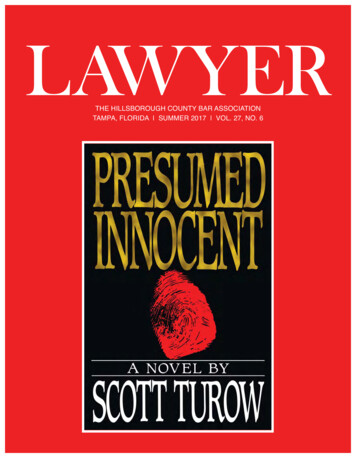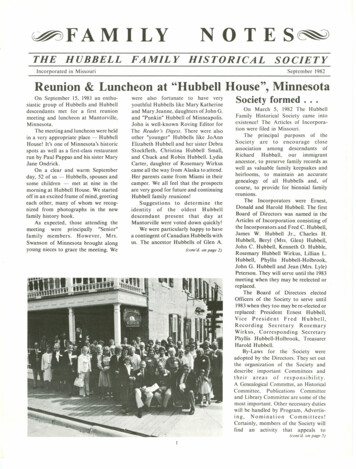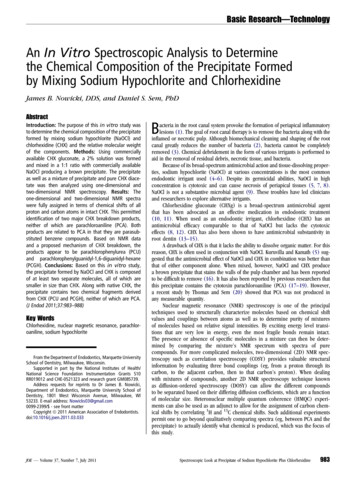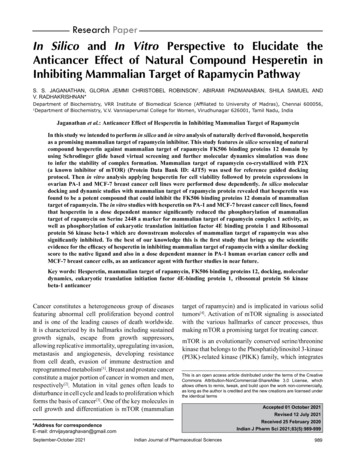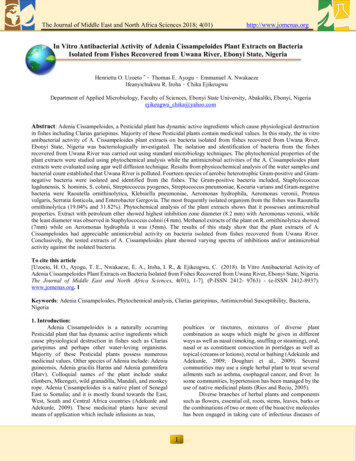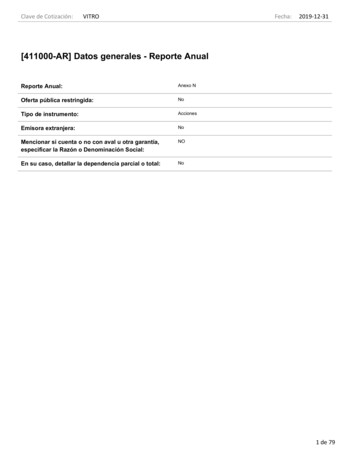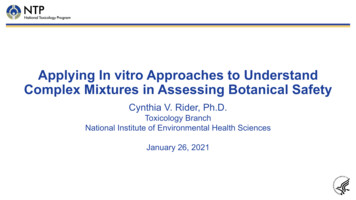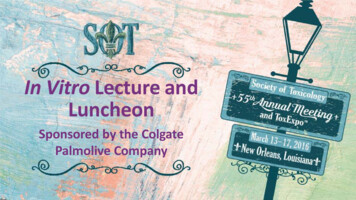
Transcription
In Vitro Lecture andLuncheonSponsored by the ColgatePalmolive Company
Multicellular Model Systems for In VitroToxicity Testing—Strengths and ChallengesNorbert E. Kaminski, PhDMichigan State UniversitySOT 55th Annual Meeting and ToxExpo2
In Vitro Co-Culture Biological ModelsNorbert E. Kaminski, PhDInstitute for Integrative ToxicologyDepartment of Pharmacology & ToxicologyMichigan State UniversityEast Lansing, MISociety of Toxicology In Vitro Lunch March 14, 2016
Presentation Objectives Benefits and challenges of in vitro approaches in toxicology The 3 Rs in the welfare of animal use in research Two in vitro co-culture models for inducing B cells to becomeantibody secreting plasma cells The two model systems will set the stage for discussingcell:cell interactions and the impact on data interpretationNorb Kaminski – CSSOT 10.11.13
Why use in vitro approaches intoxicology?Society of Toxicology In Vitro Lunch March 14, 2016
The 3 Rs Replace the use of animals with alternative techniques, or avoid theuse of animals altogether. Reduce the number of animals used to a minimum, obtaininformation from fewer animals or more information from the samenumber Refine the way experiments are carried out to make sure animalssuffer as little as possible (i.e., improvements to procedures tominimize pain, improve animal welfare, better housing).Society of Toxicology In Vitro Lunch March 14, 2016
Elucidating the UnderlyingMechanismsOrganismalOrganSociety of Toxicology In Vitro Lunch March 14, 2016Cellular
Elucidating the UnderlyingMechanismsOrganismalOrganSociety of Toxicology In Vitro Lunch March 14, 2016Cellular
Challenges with In VitroApproaches Society of Toxicology In Vitro Lunch March 14, 2016
Example: Measurements of BLymphocyte FunctionRole of the B cell is to secrete antibody to protectthe host against pathogens.In vivo – Quantify circulating antibodies inblood directed against an antigen (e.g.,vaccines such as tetanus or hepatitis).In vitro – Quantify antibodies production ornumber of antibody producing cells usingcirculating B cells.Society of Toxicology In Vitro Lunch March 14, 2016
CD40-CD40L Interactions Provide a CrucialSignal for B cell DifferentiationAntigenAntibody secreting cells(plasma cells)cytokines(IL-2, IL-6, IL-10)(Modified from Janeway’s Immunobiology)Society of Toxicology In Vitro Lunch March 14, 2016
CD40-CD40L Interactions Provide a CrucialSignal for B cell DifferentiationToxicant (TCDD)Effect?AntigenAntibody secreting cells(plasma cells)cytokines(IL-2, IL-6, IL-10)(Modified from Janeway’s Immunobiology)Society of Toxicology In Vitro Lunch March 14, 2016
Surrogate CD40L-induced IgM ResponseCytokinesBCD40LCD40Antibody secreting cells(plasma cells)Society of Toxicology In Vitro Lunch March 14, 2016CD40L- L CellsIrradiated
Surrogate CD40L-induced IgM ResponseToxicant (TCDD)CytokinesEffect?BCD40LCD40Antibody secreting cells(plasma cells)Society of Toxicology In Vitro Lunch March 14, 2016CD40L- L CellsIrradiated
Suppression by TCDD of the CD40L-InducedIgM Response in Human Peripheral Blood B cellsSociety of Toxicology In Vitro Lunch March 14, 2016
Final PollSOT 55th Annual Meeting and ToxExpo16
(Modified from Janeway's Immunobiology) Society of Toxicology In Vitro Lunch March 14, 2016 . CD40-CD40L Interactions Provide a Crucial . Signal for B cell Differentiation . Antigen . Antibody secreting cells (plasma cells) cytokines (IL-2, IL-6, IL-10) (Modified from Janeway's Immunobiology)


